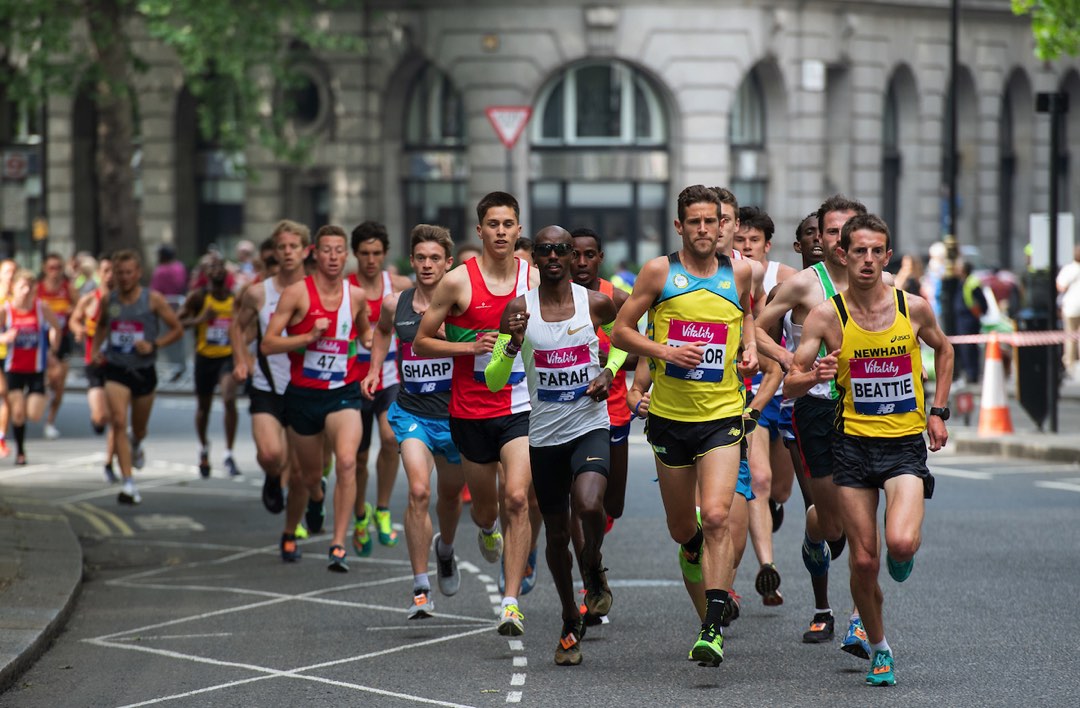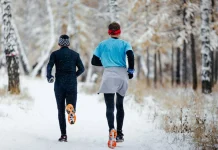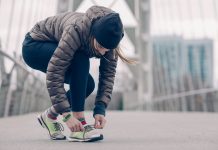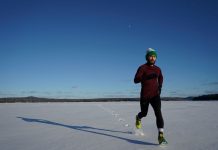If you are an avid runner, especially a long-distance runner (5+ miles at a time) then you or a fellow mate have probably experienced the dreaded athlete’s foot. This highly contagious, yet common, infection is thought to affect 15 to 25 percent of that general population or 70% of people. So, what is athlete’s foot, how do you know if you have it and how can you prevent it? Read this quick guide to learn more:
What is Athlete’s Foot?
Athlete’s foot, or tinea pedis, is caused by a contagious fungus called dermatophytes or trichophyton and it is technically the same as ringworm but it shows up most often on the feet of athletes – of all ages. This fungus infects the skin and can create a burning, stinging or itchy sensation in the form of a rash on the skin of the foot, as well as flaking, scaling, and fissuring (splitting or cracking) of the skin. It generally infects the webbed skin between your toes but can easily spread around your feet, as well as to the soles and sides. If you’re not careful it can also spread to other parts of your body like your armpits and the groin area (jock itch). According to the Mayo Clinic, there is also a type of athlete’s foot known as Moccasin-type athlete’s foot, which can cause cracking, peeling or excessive dryness on the bottoms or sides of the feet.
When left untreated, athlete’s foot can also cause open sores and blisters which are caused by friction between your foot and the sock or shoe. Blisters can also happen from new sneakers or if your shoes don’t fit properly, either too small or too big. They can even happen when your laces are tied too tight. They can appear when the skin of your foot becomes soft due to sweaty feet or wet conditions. You can avoid blisters by ensuring your running shoes fit properly, wearing socks especially made for running, applying a small amount of Vaseline or Bodyglide to problem areas and keeping your “summer feet” or calluses which create a natural protection from blisters.
If you are already experiencing blisters, you can drain it before it pops by disinfecting a sewing needle (wipe with rubbing alcohol, submerge in boiling water or use a flame) and carefully poking around the edges before pressing the fluid out. Make sure to keep to the area clean with a fresh bandage. You can also take preventative steps while the rash heals to avoid more irritation. Try wearing blister protectors like moleskin over sores that could rub against your shoes when running. Breathable toe caps and going barefoot around the house can also help keep your feet dry and allow the antifungal medication to do its job.
If you leave athlete’s foot or blisters untreated they may cause a bacterial infection making it difficult to run, walk or wear shoes. In more extreme cases, your lymph node system can become infected and in a very rare, extreme case it is possible to develop cellulitis which is a bacterial infection deep in the skin, untreated cellulitis can lead to blood poisoning bone infection. This is very rare but just another important reason to treat infection symptoms as soon as you notice them.
Athlete’s foot is not just annoying and painful, it is also highly contagious. It can easily be contracted and spread by walking barefoot on a contaminated floor or by simply sharing a towel with someone who is infected. As runners, we are even more susceptible to experiencing these symptoms because of the nature of our sport, even more so if you live with diabetes or a compromised or weakened immune system.
We have around 250,000 sweat glands in our feet and they release a lot of moisture when we workout or run, especially long distances. Fungus thrives in warm, moist areas and the inside of our running shoes and socks is the perfect breeding ground. Luckily, athlete’s foot is easily preventable.
Avoiding Athlete’s Foot in Runners
You can easily prevent athlete’s foot by developing good habits and hygiene. What you do before and after a run plays an important role in avoiding an infection. Keep these terrific top tips in mind and make them part of your running routine to avoid funky foot fungus:
- Wear moisture-wicking socks made of breathable materials that help keep your feet dry – preferably cotton, wool or silk
- Change your socks often and always wash and dry them after a run
- Wear well-ventilated, waterproof shoes when trail running, running in the rain or running near water
- Apply antiperspirant on your feet before a run
- Use antifungal foot powder in your shoes and socks to eliminate moisture
- Always wear protective footwear in common areas like public bathrooms, showers, locker rooms, etc.
- Toe Spacers help prevent blisters as they condition your feet to be properly position which also helps prevent plantar fasciitis and other feet problems. Here is the most recommended for runners.
- Wash and thoroughly dry your feet after a run, with a separate, clean towel
- Make sure your running shoes are completely dry before running in them again, we all have our favorite pair to run in, but consider alternating running shoes so they have sufficient time to air out
- Don’t share shoes, linens, socks, towels, etc. with other people
- Try and walk barefoot as much as possible at home
- Soak feet in salt water or a diluted vinegar solution to clear up any blisters
- Wash and dry your feet twice a day
- Take your socks and shoes off right after a run
- Always keep your feet dry, use talcum or baby powder if needed
- Dry your feet completely before putting on socks, stockings or tights
- Try and walk barefoot whenever there is a dry, clean surface – this allows the fungus to air out and the foot to dry
Treating Athlete’s Foot
If you are one of the millions of people effected by an ongoing athlete’s foot infection, take quick action to treat it and make sure you eliminate the fungus from your footwear. You can make sure you sanitize your sneakers by spraying the insides with lysol, rubbing alcohol, a white vinegar solution or you can sprinkle corn starch or zinc oxide inside. Some shoes are washer/dryer friendly or let them sit in the sun to dry out. Experts recommend using any one of the many antifungal medications on the infected area like Bifonazole and clotrimazole which are both antifungal ointments, as well as hydrocortisone – a mild steroid and always washing your hands thoroughly, with warm soap and water, after treatment to avoid spreading the infection.
Most of these medications can be found as creams, sprays, powders, ointments, and lotions at your local pharmacy or drug store. There are “home remedies” you can try as well. Some studies have shown that diluted tea tree oil solutions can be an effective treatment for relieving athlete’s foot symptoms, neem oil may also be useful as it has antifungal properties You can use hydrogen peroxide on the surface of your skin which should bubble if you have open wounds and may sting slightly, rubbing alcohol may also be used. Check out this video to see how it is done. You can try crushing up fresh garlic and rubbing it over the infected area twice a day, soaking your feet in a sea salt bath then using talcum or baby powder to keep the area dry. Vicks vapor rub is also said to be useful as the eucalypts and menthol are antifungals. Make sure to see you doctor if symptoms don’t clear up.
In the event that your athlete’s foot rash spreads around your feet or to other parts of your body, you may want to consult your doctor. In some cases, skin conditions like psoriasis, dyshidrotic eczema, or contact dermatitis can be mistaken for athlete’s foot, so a clinical evaluation is essential to rule out all other factors. Doctors can run quick tests to nail down the source of the infection. According to Medical News Today, these tests are called skin lesion potassium hydroxide, where the doctor scrapes a sample of infected tissue and places it in potassium hydroxide (KOH). The KOH solution eliminates human skin cells, leaving only the fungal cells which can then be viewed under the microscope. If needed, your doctor can prescribe stronger antifungal topical or oral medications to successfully treat and combat athlete’s foot if OTC medication is not working.
The Take Away
Essentially, the most important thing to remember about athlete’s foot is to keep your feet and running shoes dry and clean – keep a second pair of sneakers around so you can rotate if necessary. Avoid walking barefoot in public areas such as locker rooms, bathrooms and swimming pools and don’t share towels, shoes or linens with someone who might be infected. You should always consult your doctor if you have any questions or concerns.






























